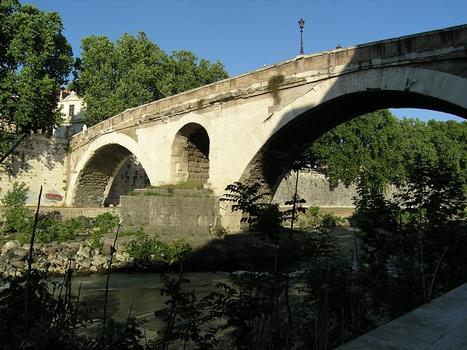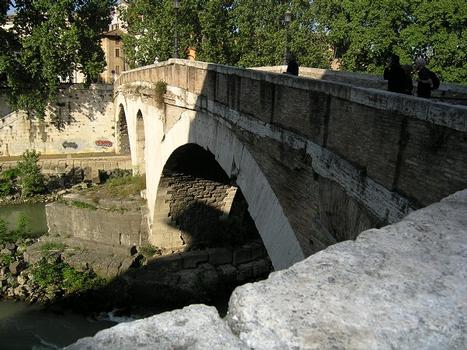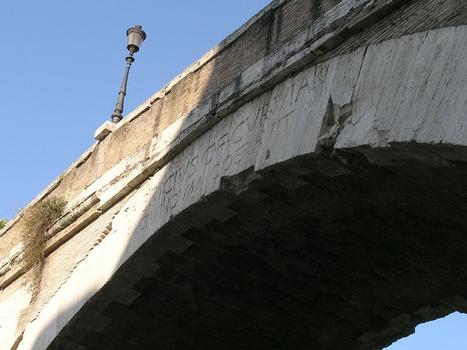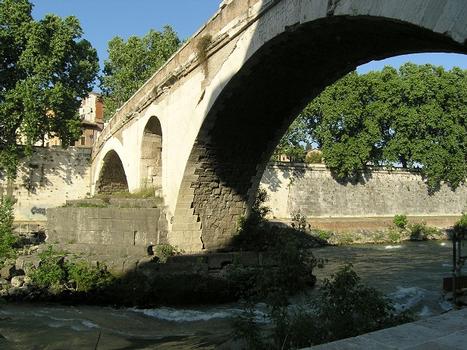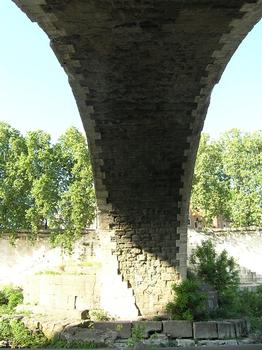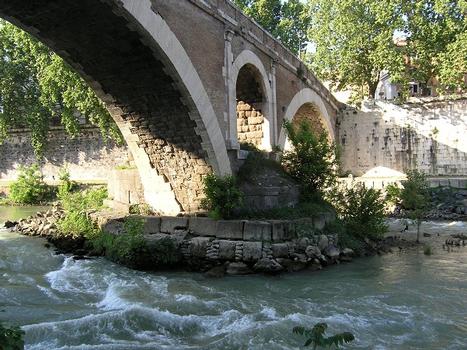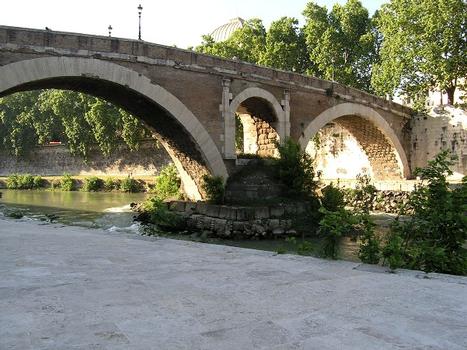General Information
| Completion: | 62 B.C. |
|---|---|
| Status: | in use |
Project Type
| Structure: |
Vaulted arch bridge |
|---|---|
| Material: |
Masonry bridge |
| Architectural style: |
Roman |
| Material: |
Structurae Plus/Pro - Subscribe Now! |
| Function / usage: |
original use: Road bridge current use: Pedestrian bridge (footbridge) |
Location
| Location: |
Rome, Roma, Lazio, Italy |
|---|---|
| Crosses: |
|
| Coordinates: | 41° 53' 27.81" N 12° 28' 41.57" E |
Technical Information
Dimensions
| total length | 62.00 m | |
| span lengths | 2 x 24.50 m | |
| number of spans | 2 |
Materials
| piers |
stone
|
|---|---|
| arches |
stone
|
Excerpt from Wikipedia
The Pons Fabricius (Italian: Ponte Fabricio, meaning "Fabricius' Bridge") or Ponte dei Quattro Capi, is the oldest Roman bridge in Rome, Italy, still existing in its original state. Built in 62 BC, it spans half of the Tiber River, from the Campus Martius on the east side to Tiber Island in the middle (the Pons Cestius is west of the island). Quattro Capi ("four heads") refers to the two marble pillars of the two-faced Janus herms on the parapet, which were moved here from the nearby Church of St Gregory (Monte Savello) in the 14th century.
Bridge
According to Dio Cassius, the bridge was built in 62 BC, the year after Cicero was consul, to replace an earlier wooden bridge destroyed by fire. It was commissioned by Lucius Fabricius, the curator of the roads and a member of the gens Fabricia of Rome. Completely intact from Roman antiquity, it has been in continuous use ever since.
The Pons Fabricius has a length of 62 m, and is 5.5 m wide. It is constructed from two wide arches, supported by a central pillar in the middle of the stream. Its core is constructed of tuff. Its outer facing today is made of bricks and travertine.
Inscription
An original inscription on the travertine commemorates its builder in Latin: L . FABRICIVS . C . F . CVR . VIAR | FACIVNDVM . COERAVIT | IDEMQVE | PROBAVIT ("Lucius Fabricius, son of Gaius, superintendent of the roads, took care and likewise approved that it be built"). It is repeated four times, once on each side of each arch.
A later inscription, in smaller lettering, records that the bridge was restored under Pope Innocent XI, probably in 1679.
Text imported from Wikipedia article "Pons Fabricius" and modified on July 22, 2019 according to the CC-BY-SA 4.0 International license.
Participants
Currently there is no information available about persons or companies having participated in this project.
Relevant Web Sites
Relevant Publications
- (2002): Bauplanung im Altertum. Werkstoffe, Tragsysteme, Konstruktionen und Verfahren. In: [ Umrisse ], v. 2, n. 3 ( 2002), pp. 6-13.
- (1997): Brunnen - Brücken - Aquädukte. Berichte zum Bauen in der Antike. In: Bautechnik ( 1997), pp. 1-106.
- (1984): La construction romaine. Matériaux et techniques. 3rd edition, Picard, Paris (France), pp. 368.
- (1997): Geschichte der Baukonstruktion und Bautechnik. Band 1: Antike bis Renaissance. 2nd edition, Werner-Verlag, Düsseldorf (Germany), pp. 103-104.
- (1990): Les grands ponts du monde: Ponts remarquables d'Europe. Brissaud, Poitiers (France), pp. 306.
- About this
data sheet - Structure-ID
20001263 - Published on:
03/02/2001 - Last updated on:
06/03/2022

